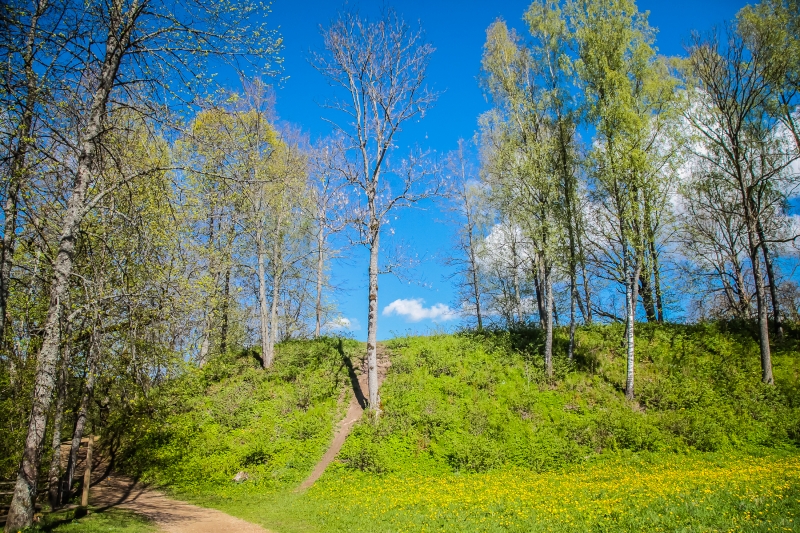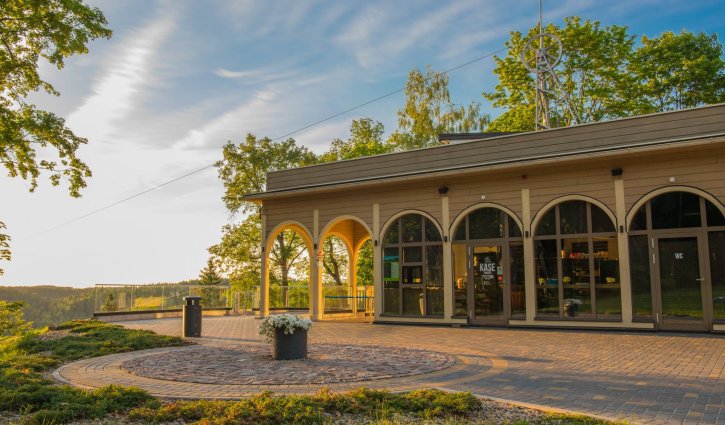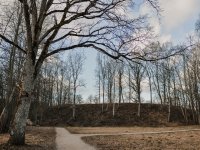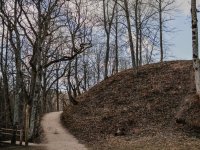
It is also referred to as Livs’ Mountain. An important 11th-century fortification of the Gauja Livs, on which the Dabrelis castle was located. The mound is enclosed by an 8 m high and 75 m long bulwark.
| Address | Pēteralas iela, Sigulda |
| Coordinates | 57.171673 24.870580 |
| Phone | +371 67971335 |
| info@sigulda.lv |
Satesele castle mound is in the oldest populated area of Sigulda. Dates indicate people have lived in this basin area downstream from the Gauja River, where the towns of Sigulda, Turaida, and Krimulda are now found, since 2000 B.C. Early man lived here in settlements where they fished, hunted, raised farm animals, and cultivated crops. Archaeological excavations provide evidence that up until about the 7th century, Sigulda and the surrounding area was inhabited by the Semigallians of Vidzeme or Gauja. The rich Liv culture later bloomed around the 11th century. Wooden castles and fortifications used for cover in case of an unexpected attack were usually built on the steepest coast areas of the Gauja River. The names of the main district castle mounds: Satesele, Toreida, Kubesele, all carry the sounds of the Liv language.
Castle mounds were manned by alert, bow-armed warriors. The surrounding atmosphere vibrated with the sounds of the tools used by forgers, carpenters, potters, and other craftsmen. To learn more about the Liv people and their imprint on Latvian culture, please visit the exhibition about the Livs of Gauja in Turaida's Museum-Reserve!
All of the castle mounds surrounding Sigulda are close to the Gauja River or its tributaries. Three of the castle mounds sides are demarcated by naturally steep slopes with a ditch and bulwark protecting the fourth side. Houses, outbuildings, and the well were all placed behind the bulwark which had a protective wooden wall built a top of it.
During the 13th century, the Satesele castle mound or Livs hill was ruled by the Livs chief Dabrelis. An 8 by 75-meter long bulwark was used to fortify the settlement. During the 13th century, multiple battles between the local tribes and the Knights of the German order took place here. Liv chief Darbelis was known as a tireless fighter against Christianity and the Germans who dared to impose their faith on the locals. A detailed description of two battles near Satesele castle between the Livs and the Germans can be found in The Chronicle of Henry of Livonia. The first battle in 1206 resulted in an unsuccessful attempt to occupy the castle while the second record a German triumph a few years later.
Satesele castle mound is a suitable place for a short walk in Sigulda territory, where you can experience the history of the county and look at the magnificent scenery.


















